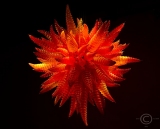- Forum
- General Discussion | Introductions | Off Topic Forum
- Photography General Discussion
- Camelopardalid meteor shower (never before seen) on May 23-24, 2014
Camelopardalid meteor shower (never before seen) on May 23-24, 2014
-
 Topic Author
Topic Author
- TaesunShim
- Newbie
- Nikon D610
- Followers: 2
- Posts: 6
-
Points:
0
Post #375602
-

- Luca
- The Lounger
-
- Nikon D7000
- Followers: 174
- Posts: 1020
-
Points:
7303
-
 Topic Author
Topic Author
- TaesunShim
- Newbie
- Nikon D610
- Followers: 2
- Posts: 6
-
Points:
0
Post #375608
-

- Alan Nunez
- Snapobsessed
-
- Nikon D3 & D2x
- Followers: 88
- Posts: 391
-
Points:
0
Post #375614
TaesunShim wrote: I have two lenses (they aren't the best out there, but they are still okay to use) and the maximum aperture it can reach is f/3.5. Would that be enough?
You should be OK if that is all you have. Make sure you have a very steady tripod and maybe some additional weight to hang on the tripod for additional stability. You will need a stopwatch as you may want to exposures beyond the settings of you camera. A cable release with a manual lock. Also it would be worth experimenting with the way your camera deals with long exposure and noise reduction before you head out on the shoot.
-
 Topic Author
Topic Author
- TaesunShim
- Newbie
- Nikon D610
- Followers: 2
- Posts: 6
-
Points:
0
Post #375617
-

- JeremyS
- Photography Hooked
-
- Nikon D3200 & Nikon D800
- Followers: 31
- Posts: 506
-
Points:
291
Post #375663
TaesunShim wrote: I know the "BULB" feature, and I know how to use a cable release. I just don't get any idea on how long my exposure should be for the best result....(trial and error wouldn't necessarily be an option because I am dealing with a meteor shower which won't last all night). If I have my exposure too long, I am worried that the movement of the Earth will move the stars from its first alignment and make a "semi-star trail" which, what I think, would look ugly. (A whole, 250 frame star trail would look great though)
I recently read an article (the one on how to take pictures of the milky way recently posted on the PT facebook page) that said that shooting at a maximum of 30 seconds is good, because anything more would typically record a star trail, another way is as you said, shooting multiple frames to try and catch as many meteors as you can but edit out some of the stars creating trails.
I have never done a star shoot, so all of my ideas are coming from articles and knowledge from the internet.
-

- garyrhook
- Oh Wise One
-
- Nikon D850, Nikon D750, Panasonic G7K
- Followers: 912
- Posts: 11103
-
Points:
67681
Post #375750
Takennnn wrote: I recently read an article (the one on how to take pictures of the milky way recently posted on the PT facebook page) that said that shooting at a maximum of 30 seconds is good, because anything more would typically record a star trail, another way is as you said, shooting multiple frames to try and catch as many meteors as you can but edit out some of the stars creating trails.
I have never done a star shoot, so all of my ideas are coming from articles and knowledge from the internet.
Nothing wrong with working from accurate articles. My understanding is also 30 seconds or less.
Multiple exposure won't work. Each one needs to be properly exposed, or you'll never record enough light to register the stars.
-
 Topic Author
Topic Author
- TaesunShim
- Newbie
- Nikon D610
- Followers: 2
- Posts: 6
-
Points:
0
Post #375759
Oh, and how do you "reply" to someone (where your post is below another post you are replying to)?
-

- garyrhook
- Oh Wise One
-
- Nikon D850, Nikon D750, Panasonic G7K
- Followers: 912
- Posts: 11103
-
Points:
67681
Post #375852
TaesunShim wrote: Are you recommending a shutter speed of 30 seconds or less? I think that might lead to an underexposed picture. Well, I do not know anything of low-light photography so... Maybe a higher ISO might work but it feels like in such dark conditions, using a very high ISO would create a lot of noise.
Oh, and how do you "reply" to someone (where your post is below another post you are replying to)?
There's a "quote" button in the bottom right corner of the post.
Yes, a shutter speed of 30 seconds or less. Yes, it's very dark. Yes, you have to increase your ISO, but it's amazing what happens when you combine the two. You will need to do some exploration on the interweb, or go out and experiement.
As for noise, you will also want to look at the "dark frame subtraction" technique.
-

- effron
- Newbie
- Followers: 1623
-
Points:
129640
Post #375857
www.photographyblogger.net/how-to-photograph-the-milky-way/
starcircleacademy.com/
Why so serious?
-
 Topic Author
Topic Author
- TaesunShim
- Newbie
- Nikon D610
- Followers: 2
- Posts: 6
-
Points:
0
Post #375895
garyrhook wrote:
TaesunShim wrote: Are you recommending a shutter speed of 30 seconds or less? I think that might lead to an underexposed picture. Well, I do not know anything of low-light photography so... Maybe a higher ISO might work but it feels like in such dark conditions, using a very high ISO would create a lot of noise.
Oh, and how do you "reply" to someone (where your post is below another post you are replying to)?
There's a "quote" button in the bottom right corner of the post.
Yes, a shutter speed of 30 seconds or less. Yes, it's very dark. Yes, you have to increase your ISO, but it's amazing what happens when you combine the two. You will need to do some exploration on the interweb, or go out and experiement.
As for noise, you will also want to look at the "dark frame subtraction" technique.
I've known about the "dark frame subtraction" technique for quite a time but never understood it. Is it where I would take a picture and take another (same settings) but with the lens cap on? What would I have to do after in Photoshop to minimize noise, and how does it work?
-

- John Landolfi
- Super User
-
- Nikon D3S, D7100, Sony RX10, Canon G11, F4s, F2sb, RetinaflexIV etc, etc
- Followers: 1205
- Posts: 21605
-
Points:
40394
Post #375906
TaesunShim wrote:
garyrhook wrote:
TaesunShim wrote: Are you recommending a shutter speed of 30 seconds or less? I think that might lead to an underexposed picture. Well, I do not know anything of low-light photography so... Maybe a higher ISO might work but it feels like in such dark conditions, using a very high ISO would create a lot of noise.
Oh, and how do you "reply" to someone (where your post is below another post you are replying to)?
There's a "quote" button in the bottom right corner of the post.
Yes, a shutter speed of 30 seconds or less. Yes, it's very dark. Yes, you have to increase your ISO, but it's amazing what happens when you combine the two. You will need to do some exploration on the interweb, or go out and experiement.
As for noise, you will also want to look at the "dark frame subtraction" technique.
I've known about the "dark frame subtraction" technique for quite a time but never understood it. Is it where I would take a picture and take another (same settings) but with the lens cap on? What would I have to do after in Photoshop to minimize noise, and how does it work?
- Forum
- General Discussion | Introductions | Off Topic Forum
- Photography General Discussion
- Camelopardalid meteor shower (never before seen) on May 23-24, 2014
Latest Reviews
The Olympus Pen E-P7 is an affordable micro four thirds mirrorless camera with 4K video capabilities, a 20.3MP sensor, and 121 focus points, making it a solid entry-level camera for beginners.
The Panasonic G9 II is a 25.2-megapixel micro four thirds camera with numerous features that make it punch out of its weight class, like 779 AF points, 5.8K video, and weather sealing.
The Fujifilm XT5 is a 40MP mirrorless camera capable of 6.2K video at 30p. With those specs, it’s an ideal choice for photographers needing a camera to pull double duty for imaging and video.
The Canon EOS R100 is an entry-level mirrorless camera introduced in 2023. But just because it’s an entry-level camera doesn’t mean it’s a bare-bones camera. Find out why in this review!
Forum Top Posters
-
1Scotty 8 posts
-
2TCav 6 posts
-
3Ruby Grace 6 posts
-
4Nefarious 3 posts
-
5CharleyL 3 posts
-
6Roger Lang 3 posts
-
7ShutterPal 3 posts
-
8James L 2 posts
-
9Clark Guay 2 posts
-
10Petroguy 2 posts
Latest Articles
The best photography jobs right now are a mix of tried-and-true gigs like wedding photography and new jobs highlighting AI’s capabilities, travel, and videography.
The Olympus Pen E-P7 is an affordable micro four thirds mirrorless camera with 4K video capabilities, a 20.3MP sensor, and 121 focus points, making it a solid entry-level camera for beginners.
Starting a photography business is one thing; sustaining your business over a long period of time is another. Use the tips in this professional photography guide to build something with longevity!
The Panasonic G9 II is a 25.2-megapixel micro four thirds camera with numerous features that make it punch out of its weight class, like 779 AF points, 5.8K video, and weather sealing.
Cinematic photography is an interesting genre that combines photographic and videographic skills along with effective storytelling techniques. The result? Highly impactful images!
Newborn photography requires skill, the right gear, and a lot of patience. This beginner’s guide discusses critical topics that will help you be more prepared for before, during, and after the shoot.
To fill the frame means to expand the footprint of the subject in your shot. Get in close, zoom in, crop the image, or use other techniques to bring the subject to the forefront.
With these simple yet effective beginner photography tips, you can avoid some of the common mistakes beginners make and get improved results with your images.
















